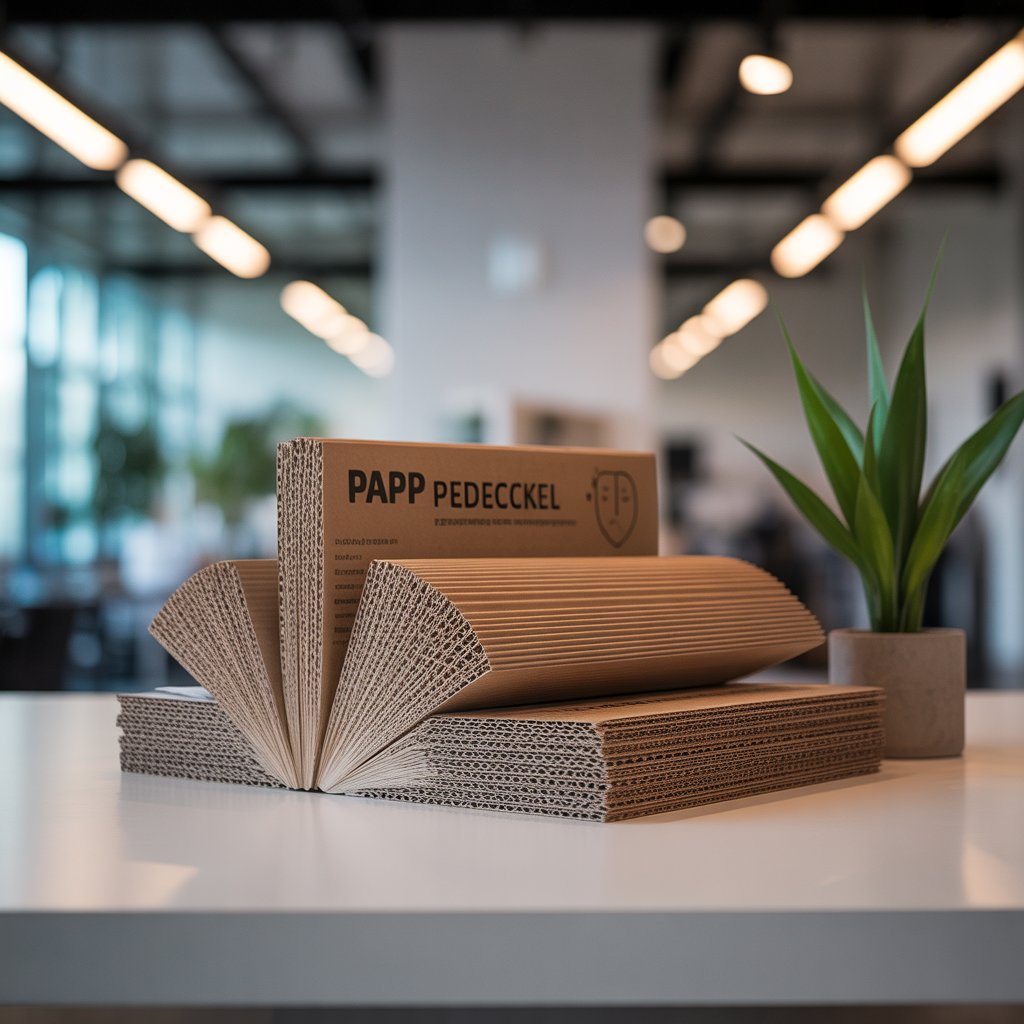The world today faces increasing challenges in managing waste and promoting sustainability, making eco-friendly materials like pappedeckel more valuable than ever. As consumer demand for green alternatives grows, companies are turning to innovative packaging solutions that reduce environmental impact without compromising quality. Pappedeckel, a versatile material, has become an essential component in this global shift toward responsible consumption.
What is Pappedeckel?
Pappedeckel refers to cardboard lids and covers used in packaging, particularly in food and beverage industries. Designed to replace single-use plastic covers, these eco-friendly alternatives are lightweight, durable, and biodegradable. Pappedeckel demonstrates how traditional packaging can evolve to meet modern sustainability goals.
Evolution of Pappedeckel in Packaging
Packaging has always played a crucial role in protecting products, yet it has often relied on harmful plastics. With growing environmental awareness, businesses started exploring alternatives like pappedeckel. Over the years, technological improvements have enhanced its strength, moisture resistance, and design flexibility, making it suitable for multiple industries.
Why Pappedeckel Matters Today
Environmental concerns drive the rising popularity of pappedeckel. Unlike plastics that persist for centuries, cardboard materials decompose naturally, reducing waste accumulation. Consumers increasingly prefer products packaged responsibly, pushing companies to adopt such solutions. As a result, pappedeckel serves as both a functional necessity and a statement of eco-consciousness.
Pappedeckel in Food and Beverage Industry
Food packaging often involves disposable covers, cups, and containers. Pappedeckel provides a sustainable replacement for plastic lids used in coffee cups, takeaway boxes, and bakery packaging. Its ability to handle moisture while maintaining structure makes it especially effective in these industries. The shift enhances brand reputation while addressing ecological concerns.
The Role of Pappedeckel in Circular Economy
The concept of a circular economy emphasizes reducing waste through reuse and recycling. Pappedeckel fits perfectly into this model because it can be easily recycled and repurposed. Companies adopting such materials contribute to resource conservation, setting examples for industries seeking greener operations.
Advantages of Pappedeckel
There are several benefits of using Pappedeckel in packaging. First, it significantly reduces dependency on plastic. Second, it offers affordability compared to other eco-friendly alternatives. Third, it allows customization, enabling brands to print logos and designs directly onto the material. These advantages make it both practical and appealing to businesses worldwide.
Pappedeckel and Consumer Preferences
Modern consumers are more aware of their ecological footprint, which influences their purchasing decisions. Packaging choices often determine customer loyalty, and brands using pappedeckel showcase responsibility. Customers appreciate businesses that prioritize sustainability, leading to increased trust, stronger reputation, and long-term growth.
Pappedeckel in Retail Packaging
Beyond food and beverage industries, pappedeckel plays an essential role in retail packaging. From clothing brands to electronics, cardboard lids and covers are widely used. Their versatility allows them to protect items while offering a clean, professional presentation. Retailers value this balance between functionality and eco-conscious branding.
Challenges Facing Pappedeckel Production
Despite its benefits, pappedeckel faces challenges. Moisture resistance, production costs, and competition from cheaper plastics remain hurdles. However, advancements in material science continue to improve durability. Governments and organizations also support eco-friendly packaging, ensuring these challenges are met with innovative solutions and growing market acceptance.
Global Demand for Pappedeckel
Countries worldwide are banning or limiting single-use plastics, fueling demand for alternatives like pappedeckel. Europe, in particular, has led the way in promoting biodegradable packaging. This trend is spreading globally, with businesses in Asia and America rapidly adopting cardboard solutions. The momentum suggests long-term growth in the demand for pappedeckel.
Pappedeckel and Sustainability Goals
Organizations aiming to meet sustainability goals integrate pappedeckel into their strategies. By adopting environmentally friendly packaging, businesses not only comply with regulations but also demonstrate leadership. These practices align with global efforts to reduce carbon emissions, conserve resources, and minimize pollution.
Innovations in Pappedeckel Designs
Modern technology allows pappedeckel to go beyond simple covers. Manufacturers are experimenting with waterproof coatings, creative designs, and foldable structures. These innovations enhance usability, ensuring the material competes effectively with plastic while still retaining eco-friendly qualities. Such advancements expand its appeal to diverse markets.
Pappedeckel in E-commerce Packaging
E-commerce has increased the need for secure and sustainable packaging. Papedeckel provides durable, customizable solutions for shipping boxes and protective covers. Companies value the balance between environmental responsibility and practical efficiency, ensuring items are delivered safely while promoting eco-friendly practices.
The Future of Pappedeckel
The future looks promising for papedeckel as industries and consumers continue prioritizing sustainability. With ongoing innovations, it may soon dominate packaging across sectors. Increased regulations against plastics and strong consumer preferences further guarantee its relevance. Companies that adapt quickly will stay competitive while contributing to global ecological goals.
Conclusion
Papedeckel symbolizes the future of sustainable packaging, bridging the gap between practicality and environmental responsibility. As industries adopt eco-friendly materials, it plays a central role in reducing waste, promoting circular economy practices, and meeting consumer expectations. Its adaptability ensures it remains relevant in diverse industries, proving that small innovations can drive significant change. The journey of papedeckel reflects a broader movement toward greener solutions that define a more sustainable future for generations to come.
